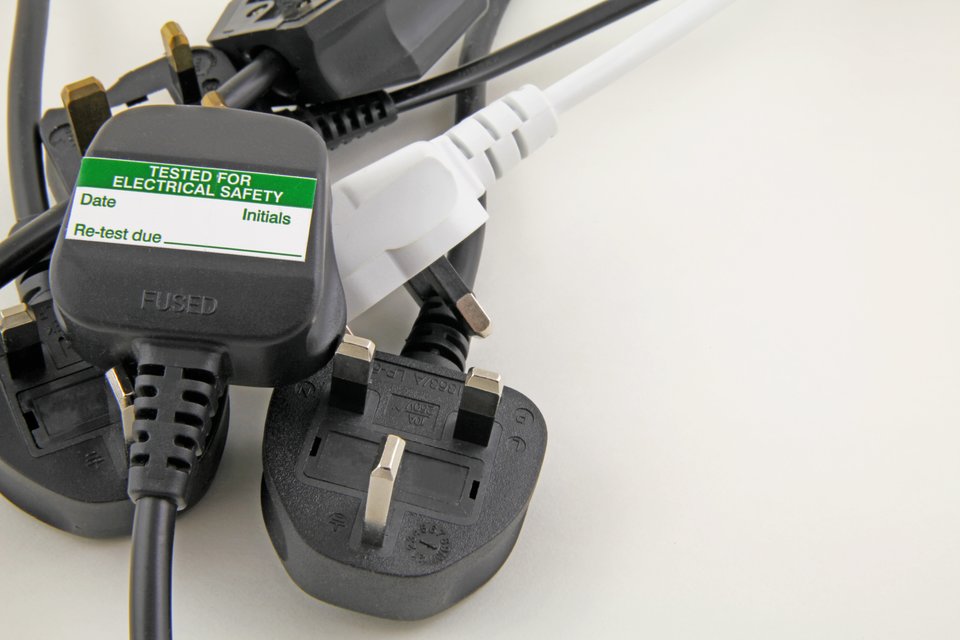
Portable Appliance Testing (PAT) is a process which tests the safety of electrical appliances. It can be used to test electrical appliances both in the workplace and at home.
There are two classes of electrical equipment, Class I and Class II, and understanding the differences between them is essential for effective PAT testing.
Here you’ll find everything you need to know about Class I and Class II electrical equipment classifications and how they might affect the PAT testing process.

PAT testing is the process of testing electrical products to make sure they are safe to use. While many electrical safety defects are easily identifiable through visual inspection, testing can reveal defects that aren’t as easy to detect. PAT testing is generally carried out in workplaces, but home electricals can be tested too to help ensure their safety.
According to the Electricity at Work Regulations 1989, all electrical equipment with the potential to cause injury must be maintained to a ‘safe condition.’ What the guidance doesn’t say, however, is that testing a legal requirement, nor does it outline how often this should be done – which can cause some confusion for those needing to maintain health and safety in the workplace.
The Health and Safety Executive has some excellent guidance on PAT testing, including recommending testing frequencies. Electrical items that are used consistently, such as power tools, should be tested more frequently than products that aren’t used as often such as printers and other office equipment.
As experts in PAT testing, we’ve put together our own phs Compliance guide to PAT testing, which provides some useful insights for businesses about how they can maintain electrical safety at work.
Understanding the differences between Class I electrical equipment and Class II Electrical Equipment can help employers and building owners plan for effective electrical safety testing. While all electrical products should be tested, there may be different factors to consider with your safety checks.
Almost all Class II equipment runs on mains. As a result, both types of appliances must also have protection for end users. The PAT test will be necessary if the device's safety and operation have been tested and it will also ensure the device's safety without electrical shock. Class 1 appliances protect their users using a blend of basic insulation and earth connection.
Class 1 electrical equipment relies on basic insulation and an earth (ground) connection to ensure safety. If the basic insulation fails, the earth connection provides a path for fault current, preventing the metal parts of the appliance from becoming live and posing a shock hazard.
What are the characteristics of Class I electrical equipment?
What are some examples of Class I electrical equipment?
What PAT testing is required for Class I electrical equipment?
- Earth Continuity Test: Ensures the earth connection is effective.
- Insulation Resistance Test: Measures the resistance of the insulation.
- Functional Checks: Ensures the appliance operates correctly.
Class 2 electrical equipment doesn’t rely on an earth connection for safety. Instead, it uses double or reinforced insulation to protect the user from electrical shock. This makes Class II electrical equipment safer and often lighter since it doesn't require an earth wire.
- Insulation Resistance Test: Ensures the insulation is intact and effective.
- Functional Checks: Confirms the appliance operates as expected.
The main differences between Class 1 electrical equipment and Class 2 electrical equipment are that they have different insulation methods. Class 1 has a basic insulation with earth connection, while Class 2 has double or reinforced insultation without earth connection. These differences significantly affect the PAT testing procedures, as Class I equipment requires an earth continuity test while Class II does not.
Misclassifying equipment can lead to improper testing, potentially leaving safety hazards unaddressed. Ensuring accurate classification helps maintain safety and regulatory compliance. This is why using professional electrical safety testers can be beneficial for ensuring the correct testing takes place. For businesses of all sizes, PAT testing is crucial, with mistakes in testing proving costly in terms of safety risks, and damage to equipment.

If you’re looking for professional PAT testing of your business or organisation’s electrical equipment, then phs Compliance can help. We’re the most experienced and largest provider of Portable Appliance Testing (PAT), dating back to 1991. We carry out over 10-million PAT tests a year, putting safety first by helping our clients maintain electrical safety at work.
Our services provide regular testing to businesses, giving you one less thing to worry about when it comes to electrical safety. Our knowledge of Class I and Class II classifications ensures our testing is done to the highest standard, giving you peace of mind for your business.
Get a free, no-obligation quote for PAT testing services in the UK with phs Compliance. Contact us today for more information.
phs Compliance worked with our Tier 1 facilities management client to deliver an extensive plant room de-commissioning and installation project across three schools in North West England. The project
phs Compliance began working with our client in 2015, delivering electrical fixed wire inspection and testing services across one hundred per cent of the hospital estate. Completed in 2010 at a cost
Engaged by a Tier 1 FM provider, phs Compliance supported the train operator client with a major electrical remedial project. The requirement was to attend and rectify remedial works across 262 rail
phs Compliance began working with our 'Big Four' food and grocery retail customer in 2009, delivering fixed wire and portable appliance inspection and testing services across one hundred per cent of
This site uses cookies that enable us to make improvements, provide relevant content, and for analytics purposes. For more details, see our Cookie Policy. By clicking Accept, you consent to our use of cookies.